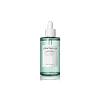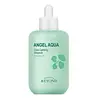What's inside
What's inside
 Key Ingredients
Key Ingredients

 Benefits
Benefits

 Concerns
Concerns

No concerns
 Ingredients Side-by-side
Ingredients Side-by-side

Centella Asiatica Extract 55%
CleansingChamaecyparis Obtusa Water
MaskingMelaleuca Alternifolia Leaf Water 9.4%
AntimicrobialPinus Palustris Leaf Extract
TonicGlycerin
HumectantButylene Glycol
HumectantMethyl Gluceth-20
HumectantDipropylene Glycol
HumectantGlycereth-26
Humectant1,2-Hexanediol
Skin ConditioningWater
Skin ConditioningHydroxyacetophenone
AntioxidantAmmonium Acryloyldimethyltaurate/Vp Copolymer
Propanediol
SolventPolyglyceryl-10 Laurate
Skin ConditioningEthylhexylglycerin
Skin ConditioningPentylene Glycol
Skin ConditioningCaprylyl Glycol
EmollientDisodium EDTA
Melaleuca Alternifolia Leaf Oil
AntioxidantOenothera Biennis Flower Extract
AstringentPueraria Lobata Root Extract
HumectantUlmus Davidiana Root Extract
Skin ConditioningCentella Asiatica Extract 55%, Chamaecyparis Obtusa Water, Melaleuca Alternifolia Leaf Water 9.4%, Pinus Palustris Leaf Extract, Glycerin, Butylene Glycol, Methyl Gluceth-20, Dipropylene Glycol, Glycereth-26, 1,2-Hexanediol, Water, Hydroxyacetophenone, Ammonium Acryloyldimethyltaurate/Vp Copolymer, Propanediol, Polyglyceryl-10 Laurate, Ethylhexylglycerin, Pentylene Glycol, Caprylyl Glycol, Disodium EDTA, Melaleuca Alternifolia Leaf Oil, Oenothera Biennis Flower Extract, Pueraria Lobata Root Extract, Ulmus Davidiana Root Extract
Water
Skin ConditioningGlycerin
HumectantDipropylene Glycol
HumectantTriethylhexanoin
MaskingNiacinamide
SmoothingPentaerythrityl Tetraethylhexanoate
Emollient1,2-Hexanediol
Skin ConditioningPanthenol
Skin ConditioningTrehalose
HumectantBambusa Arundinacea Juice
AbrasiveBetula Platyphylla Japonica Juice
Skin ConditioningVitis Vinifera Vine Sap
Skin ConditioningTrichosanthes Kirilowii Root Extract
Skin ProtectingArtemisia Annua Extract
MaskingAzadirachta Indica Leaf Extract
Skin ConditioningCamellia Sinensis Leaf Extract
AntimicrobialHydrolyzed Hyaluronic Acid
HumectantSodium Hyaluronate
HumectantAsiaticoside
AntioxidantMadecassic Acid
Skin ConditioningAsiatic Acid
Skin ConditioningAnhydroxylitol
HumectantDipotassium Glycyrrhizate
HumectantXylitol
HumectantGlucose
HumectantSclerotium Gum
Emulsion StabilisingSuccinoglycan
Skin ConditioningBetaine
HumectantXylitylglucoside
HumectantCaprylic/Capric Triglyceride
MaskingAcrylates/C10-30 Alkyl Acrylate Crosspolymer
Emulsion StabilisingPolymethylsilsesquioxane
Methyl Glucose Sesquistearate
EmollientTrisodium EDTA
Tromethamine
BufferingWater, Glycerin, Dipropylene Glycol, Triethylhexanoin, Niacinamide, Pentaerythrityl Tetraethylhexanoate, 1,2-Hexanediol, Panthenol, Trehalose, Bambusa Arundinacea Juice, Betula Platyphylla Japonica Juice, Vitis Vinifera Vine Sap, Trichosanthes Kirilowii Root Extract, Artemisia Annua Extract, Azadirachta Indica Leaf Extract, Camellia Sinensis Leaf Extract, Hydrolyzed Hyaluronic Acid, Sodium Hyaluronate, Asiaticoside, Madecassic Acid, Asiatic Acid, Anhydroxylitol, Dipotassium Glycyrrhizate, Xylitol, Glucose, Sclerotium Gum, Succinoglycan, Betaine, Xylitylglucoside, Caprylic/Capric Triglyceride, Acrylates/C10-30 Alkyl Acrylate Crosspolymer, Polymethylsilsesquioxane, Methyl Glucose Sesquistearate, Trisodium EDTA, Tromethamine
 Reviews
Reviews

Ingredients Explained
These ingredients are found in both products.
Ingredients higher up in an ingredient list are typically present in a larger amount.
1,2-Hexanediol is a synthetic liquid and another multi-functional powerhouse.
It is a:
- Humectant, drawing moisture into the skin
- Emollient, helping to soften skin
- Solvent, dispersing and stabilizing formulas
- Preservative booster, enhancing the antimicrobial activity of other preservatives
Dipropylene Glycol is a synthetically created humectant, stabilizer, and solvent.
This ingredient helps:
Dipropylene glycol is technically an alcohol, but it belongs to the glycol family (often considered part of the ‘good’ alcohols). This means it is hydrating and gentle on skin unlike drying solvent alcohols like denatured alcohol.
As a masking agent, Dipropylene Glycol can be used to cover the smell of other ingredients. However, it does not have a scent.
Studies show Dipropylene Glycol is considered safe to use in skincare.
Learn more about Dipropylene GlycolGlycerin is already naturally found in your skin. It helps moisturize and protect your skin.
A study from 2016 found glycerin to be more effective as a humectant than AHAs and hyaluronic acid.
As a humectant, it helps the skin stay hydrated by pulling moisture to your skin. The low molecular weight of glycerin allows it to pull moisture into the deeper layers of your skin.
Hydrated skin improves your skin barrier; Your skin barrier helps protect against irritants and bacteria.
Glycerin has also been found to have antimicrobial and antiviral properties. Due to these properties, glycerin is often used in wound and burn treatments.
In cosmetics, glycerin is usually derived from plants such as soybean or palm. However, it can also be sourced from animals, such as tallow or animal fat.
This ingredient is organic, colorless, odorless, and non-toxic.
Glycerin is the name for this ingredient in American English. British English uses Glycerol/Glycerine.
Learn more about GlycerinWater. It's the most common cosmetic ingredient of all. You'll usually see it at the top of ingredient lists, meaning that it makes up the largest part of the product.
So why is it so popular? Water most often acts as a solvent - this means that it helps dissolve other ingredients into the formulation.
You'll also recognize water as that liquid we all need to stay alive. If you see this, drink a glass of water. Stay hydrated!
Learn more about Water